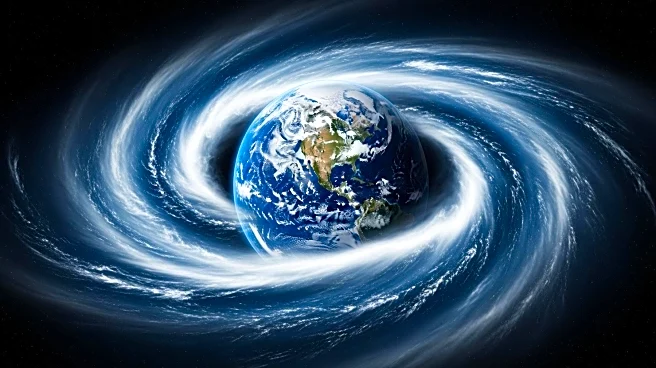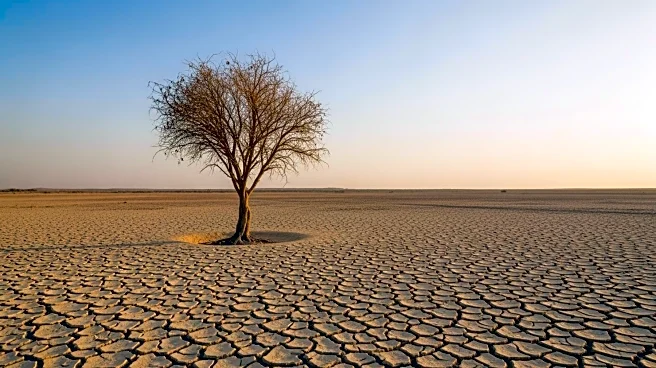What's Happening?
A rare meteorological event known as sudden stratospheric warming has been observed over Antarctica, potentially influencing weather patterns in southern Australia. This phenomenon involves a significant rise in stratospheric temperatures, which can lead to hotter and drier conditions. Historically, such events have been infrequent in the southern hemisphere, with only three major occurrences in the past 45 years. The current warming has resulted in air temperatures 30 kilometers above the Southern Ocean and Antarctica rising about 30 degrees Celsius above average. This warming is accompanied by a slowdown in the polar vortex winds, which typically reach speeds of 200 km/h but are now reduced to 100 km/h. These changes are expected to drive warmer and drier weather patterns, particularly affecting New South Wales and Victoria. However, the exact impact remains uncertain due to conflicting forecasts predicting wetter conditions.
Why It's Important?
The sudden stratospheric warming over Antarctica is significant as it could alter weather patterns in southern Australia, potentially leading to abnormally hot days and drier conditions. This has implications for agriculture, water resources, and bushfire risks in the region. Past events have shown increased springtime temperatures and reduced rainfall, which can exacerbate drought conditions and impact crop yields. Additionally, the warming could influence the southern annular mode, a climate driver that affects weather patterns across the southern hemisphere. Understanding and predicting these changes are crucial for preparing and mitigating potential adverse effects on the environment and local communities.
What's Next?
Meteorologists and climate scientists will continue to monitor the situation to better understand the potential impacts of this stratospheric warming event. The Bureau of Meteorology will likely provide updates and forecasts as more data becomes available. Stakeholders, including government agencies and agricultural sectors, may need to prepare for possible changes in weather patterns, such as implementing water conservation measures or adjusting agricultural practices to cope with drier conditions. The event also presents an opportunity for further research into the effects of stratospheric warming and its influence on climate drivers.
Beyond the Headlines
Beyond immediate weather impacts, the stratospheric warming event has implications for the ozone layer. As temperatures rise above the threshold for ozone destruction, the size of the ozone hole reduces, which is a positive environmental outcome. This highlights the complex interplay between atmospheric phenomena and environmental health, emphasizing the need for continued research and monitoring to understand long-term effects on climate and ecosystems.











